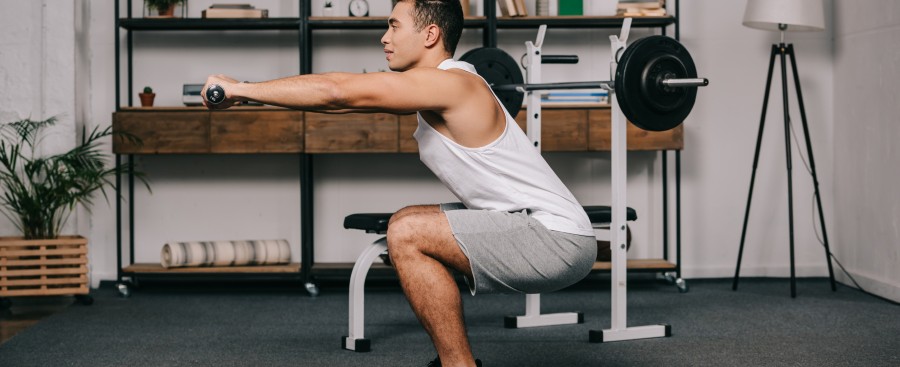 By Patrick Craig, Special FBA Contributor
By Patrick Craig, Special FBA Contributor
Once again the trends in the Fitness Industry have taken market analysts by surprise. Two big opportunities have surfaced in March and April and now are commanding a good share of the fitness market. The first is Digital Fitness and the second is Garage Gyms.
Bernhard Mehl, an entrepreneurial coach and ergonomics engineer, in a recent article on KISIblog, says that after COVID appeared, the fitness industry, and especially location-based businesses, dropped as much as 10 billion in the year following the onset of the pandemic.
The pandemic didn’t necessarily catch the industry by surprise though. In 2019, fitness tech was already the leading fitness industry trend. Industry leaders had already realized the potential of virtual training and classes, from live streaming to uploading pre-recorded workouts, as it was widely recognized that online offerings could make services more accessible to members.
When a few live-stream companies began making their software available to gyms, online training took off. In 2019, 7% of users of a well-known gym software used live-streamed workouts. This number jumped to 80% during COVID 19. To my mind, this showed the resilience and forward-thinking of the industry. As gyms and studios across the U.S. begin to reopen, it’s unlikely that virtual classes and training sessions will go anywhere.
“Consumers, for the most part, remained loyal to their local studios, as they appreciated the quick pivot to virtual offerings,” says Catalina Zbar, founder of Teomere Consulting. “But because the pandemic seems to be lingering longer than expected, those same consumers will continue to work out from home. In addition, however, they also plan on returning to their pre-COVID routines. The same gym software survey referenced above shows that 43 percent of users expect to go back to their previous in-facility routines in addition to virtual workouts.”
That’s all well and good, but what the industry was not expecting was that COVID would continue on into 2021. And when that happened a new star rose on the horizon; the Garage Gym. In a recent study, consulting company McKinsey revealed that Americans have changed the way they’re spending time at home, and at-home fitness is no exception to this trend, with a 12 percent increase in at-home fitness. With gyms closed during the pandemic and just now slowly re-opening, it’s no surprise that many fitness enthusiasts have invested more time and money into creating workout spaces at home.
What analysts have discovered is fitness enthusiasts are not letting their fitness goals fall by the wayside because they are stuck at home. In fact, this became an opportunity for fitness equipment manufacturers to tap into the market as an increased number of people are now motivated to develop a home fitness routine that can extend beyond social distancing mandates.
What analysts have discovered is fitness enthusiasts are not letting their fitness goals fall by the wayside because they are stuck at home. In fact, this became an opportunity for fitness equipment manufacturers to tap into the market as an increased number of people are now motivated to develop a home fitness routine that can extend beyond social distancing mandates. Precautionary healthcare, coupled with increasing preference for customized workout regimes (including workout timing) and a comfortable home-friendly environment, is increasing the demand for home fitness equipment, as the customers are keen to exercise daily.
So what does that mean for the bottom line in our industry? Here are some numbers. The home fitness equipment market was valued at $16,423.69 million in 2020, and it is projected to register a CAGR of 2.75% during the forecast period, 2021-2026. That’s some big bucks.
Besides COVID there are other influences that have pushed consumers into their own garages to work out. A busy schedule and crowded fitness centers with parking problems have pushed once religiously facility-dedicated fitness buffs into home workouts. Having your own equipment a few steps away eliminates the inconvenience of commuting to a gym to use the machines and with gas prices going through the roof it has become a highly cost-effective option.
But is this a good thing in the long run? I’m not so sure. Humans, because of necessity, developed into social beings over the centuries. Dependence on and cooperation with each other enhanced our ability to survive under harsh environmental circumstances. Although the survival threats of these circumstances have lessened in today’s world, people continue to have a need to affiliate with others. Indeed, the lack of such connections can lead to many problems, including loneliness and depression.
That guy that spots for you at the free weights might be the same guy you share a beer and some conversation with after the gym. Fundamentally, it doesn’t matter how technologically sophisticated we become; emotional connectivity remains a core part of being human.
It’s not so good to be alone, and there’s something about being in the friendly atmosphere of your local gym that fills a need you won’t find on a TV screen or in the emptiness of your converted garage. We need each other—maybe not in the ways that characterized us when we were living in caves, but we still need each other in a way that remains essential for psychological survival.
So do your live stream ZOOM and get a Peloton for your garage, but don’t forget about your local gym and the friendly folks who have used the COVID era to instigate some new standards at their facilities like upgraded cleanliness, health-oriented fitness, and physical and mental well-being. Most of the gyms I know are doing their best to keep you fit AND safe.
Patrick Craig has worked in the Marketing Industry for the past twenty years. He is a published author and has written extensively about the fitness industry, particularly the gym software aspect of it. He has been with Money Movers, Inc. for the last six years where he serves as the Marketing and Operations Manager, web designer and coder, and maintains the custom websites Money Movers, Inc. develops for their Online Business Manager gym software clients.


Join the Conversation!